Angels and Succubi: Women and Femininity in Wojciech Has’s Cinema
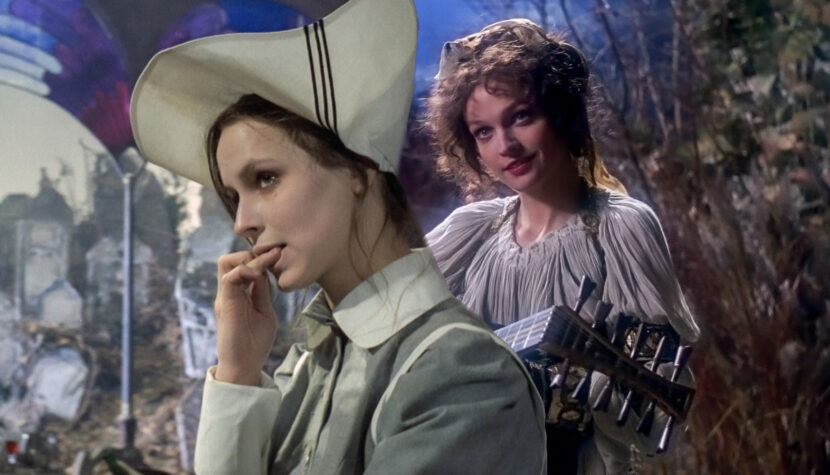
Among all these cemeteries of memories, tombstones of lost loves, certainties, and experiences, only one thing remains unchanged. The ambivalent bond between man and woman is alive in every story told by the director…
Everything began when Aleksandra Śląska, straight from the stage of the Ateneum Theatre, arrived at Kuba Kowalski’s studio apartment. The woman crossed the threshold of Has’s world to the accompaniment of two short rings at the glass doors and the hesitant, slightly terrified question from Gustaw Holoubek. The protagonist of The Noose asked if it was indeed Krystyna, the last woman who cared about the fate of the alcoholic, standing behind the door. Thanks to Mieczysław Jahoda’s cinematography, the viewer ponders this with Kuba, as only the shadow of a silhouette can be seen through the frosted glass. Is it a person or a specter, an enemy or a friend?
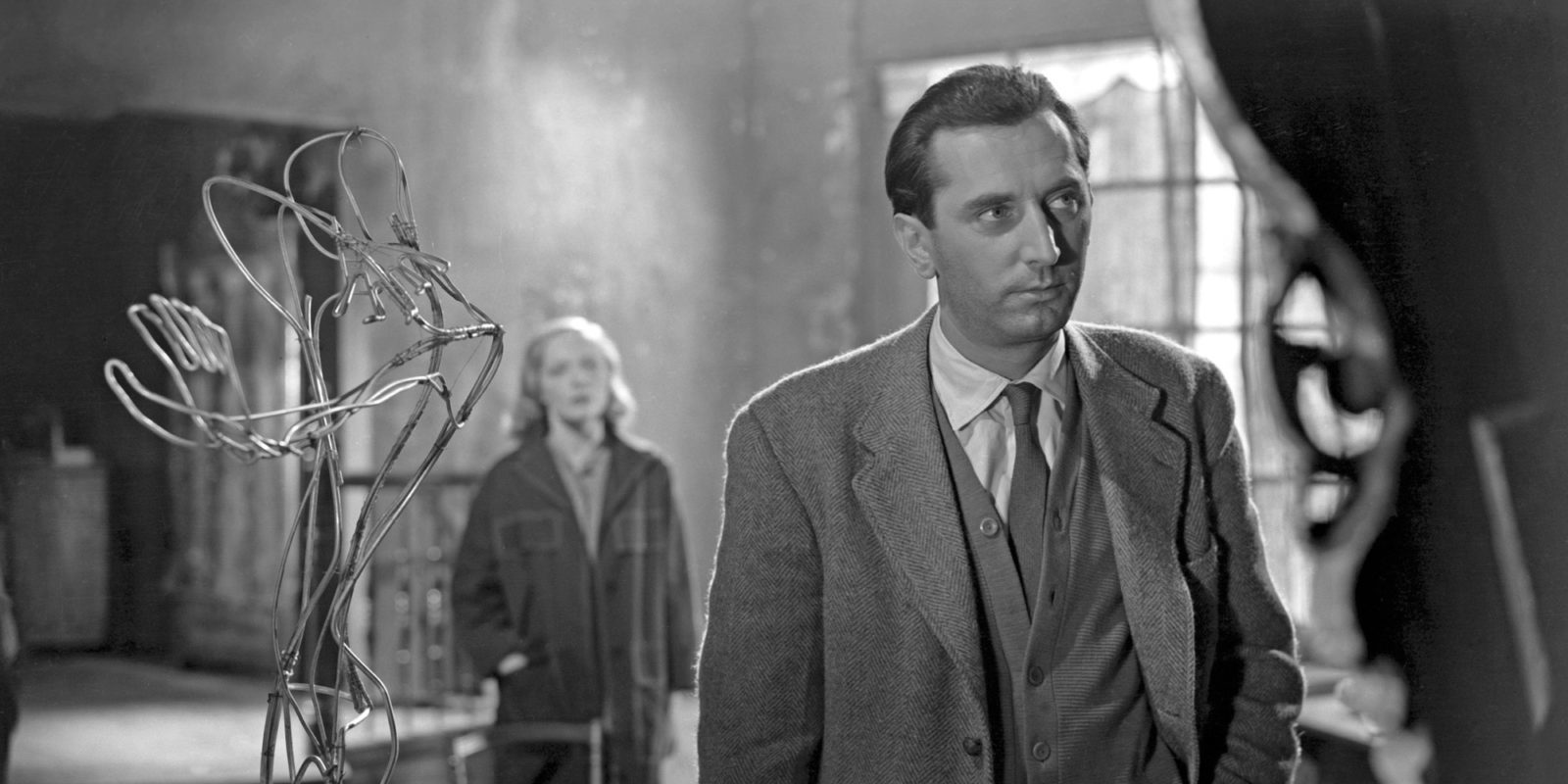
When Kuba decides to press the handle, violins start playing in the background. The tomb-like silence is broken. Krystyna brings bread, coffee, and newspapers. Against the cluttered apartment, she looks beautiful, drawing nearly all the camera’s attention. Along with Aleksandra Śląska’s smooth face, her Greta Garbo-style hair, and the unbuttoned sweater, femininity appears in Has’s cinema, a presence that will forever remain at the epicenter of his film stories. This interest will manifest in various ways. Nonetheless, whether we are looking at the emphasized cleavage of Beata Tyszkiewicz or the tired face of Irena Orska, we must remember Krystyna and the shadow looming behind the glass door. For Has, a woman was, above all, a mystery.
Angels?
Aleksandra Śląska is an angel in The Noose, hard to believe considering that a year after the film’s premiere, she transforms into the crazed Blanche from A Streetcar Named Desire (thanks to a production directed by Janusz Warmiński at the Ateneum). Her care and noble appearance do not fit into the alcoholic hell set up in Kuba’s apartment. The studio apartment is not used to the sound of violins; usually, there is only the ticking of the clock’s second hand reminding Kuba that it’s time for another drink.
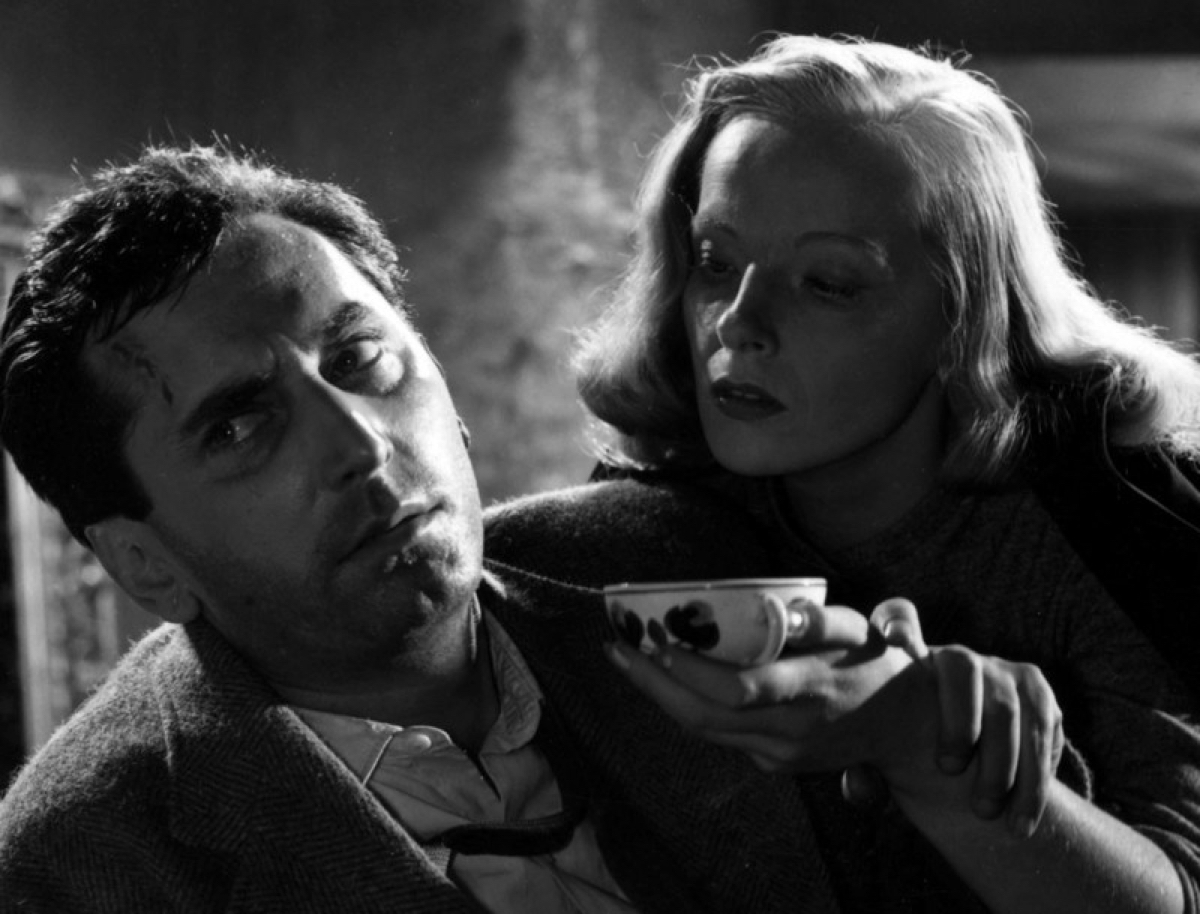
At times, it seems Kuba does not believe in Krystyna’s existence. This is particularly evident in the shot where he observes her through a mirror, as if wondering whether the glass truly reflects a human image. Similarly, years later, in An Uneventful Story, Hanna Mikuć, playing Katarzyna, will gaze at her reflection. The young woman will be the only joy of an old anatomy professor who, like the protagonist of The Noose, has lost the meaning of life. On Katarzyna’s angelic garments, however, one can see a mass of stains and abrasions. Her apparent innocence and almost childlike naivety contrast with wild eyes and sensual gestures. Katarzyna makes the professor happy with her presence, but their relationship bears signs of vampirism. After the woman leaves, joy quickly gives way to melancholy. Confronted with the force of youth, the man becomes convinced that everything is futile and he has no time left to change it. Katarzyna disappears when the professor, in a confession, admits to his life’s failure. After his confession, she announces that she intends to leave and change her life. Sheridan Le Fanu once wrote about the vampire Carmilla, who thrived as others weakened – the similarity is evident here.
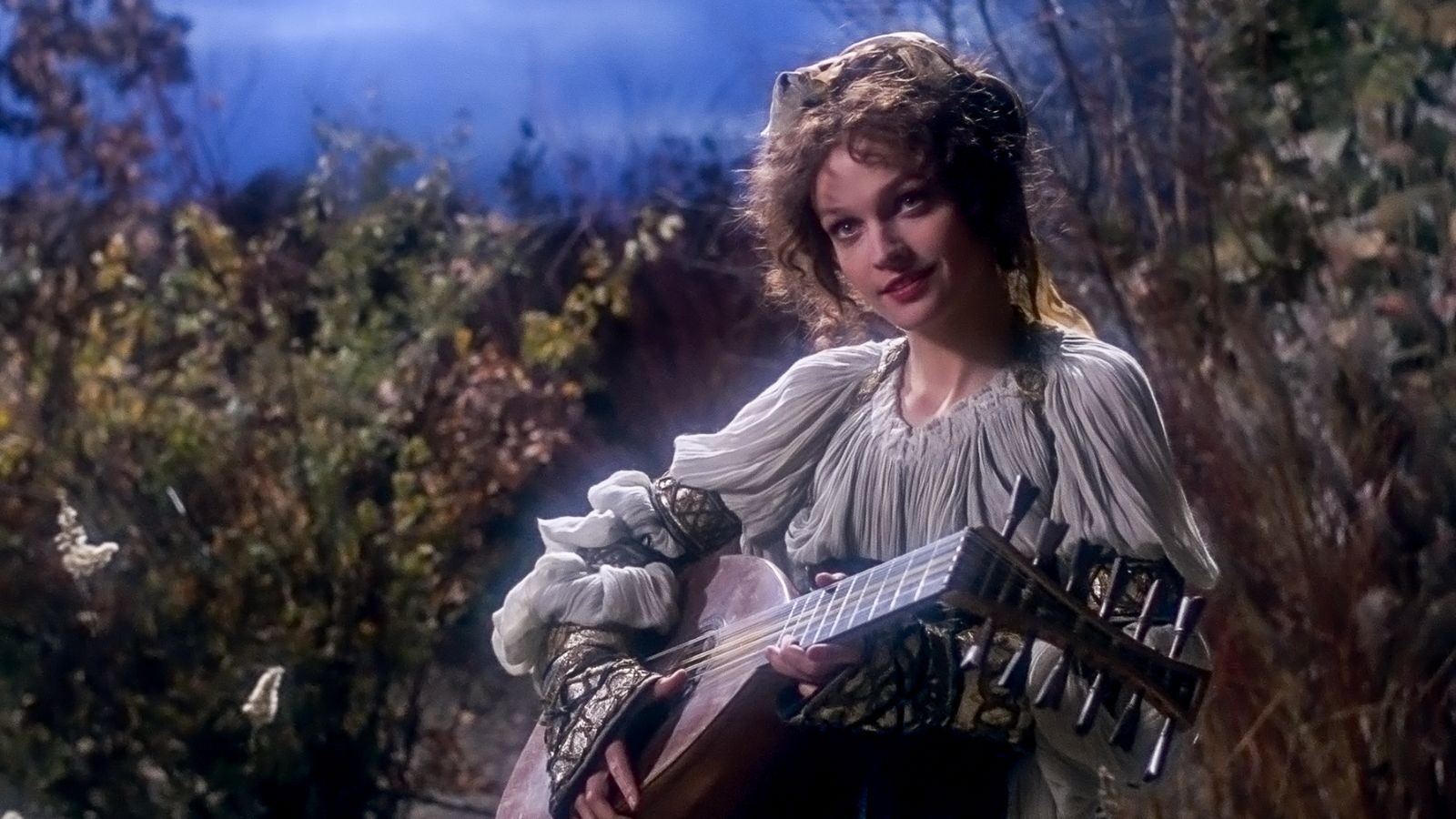
The same was true for Rosa from The Amazing Journey of Balthazar Kober. Adrianna Biedrzyńska’s gypsy beauty hypnotized the titular pilgrim and diverted his attention from his holy journey to Jerusalem. The paradisiacal aura of the entire meeting was merely an illusion, perhaps even a mockery of the young Balthazar. Rosa returns to him at the end of the film as a passenger on the gondola led by Death. Hłasko once wrote, “Every woman is like God, which is why I am repelled by religion.” If he had confessed this thought to Has or Kuba from The Noose, they would probably have poured him a drink. Kober wouldn’t understand; he was too young.
Specters?
What chance did Alfons Van Worden have for salvation when, beyond the threshold of the Venta Quemada inn, he encountered a dark-skinned servant tempting the visitor with her exposed breast? Probably very little. His chances dwindled further as he navigated the labyrinth of winding stairs, guided by a lantern held by the servant, until he reached the cave of the Moorish princesses. Emina and Zibelda, Iga Cembrzyńska and Joanna Jędryka, both just over twenty, in scanty outfits revealing far too much to avoid eliciting a nervous smile from Van Worden.
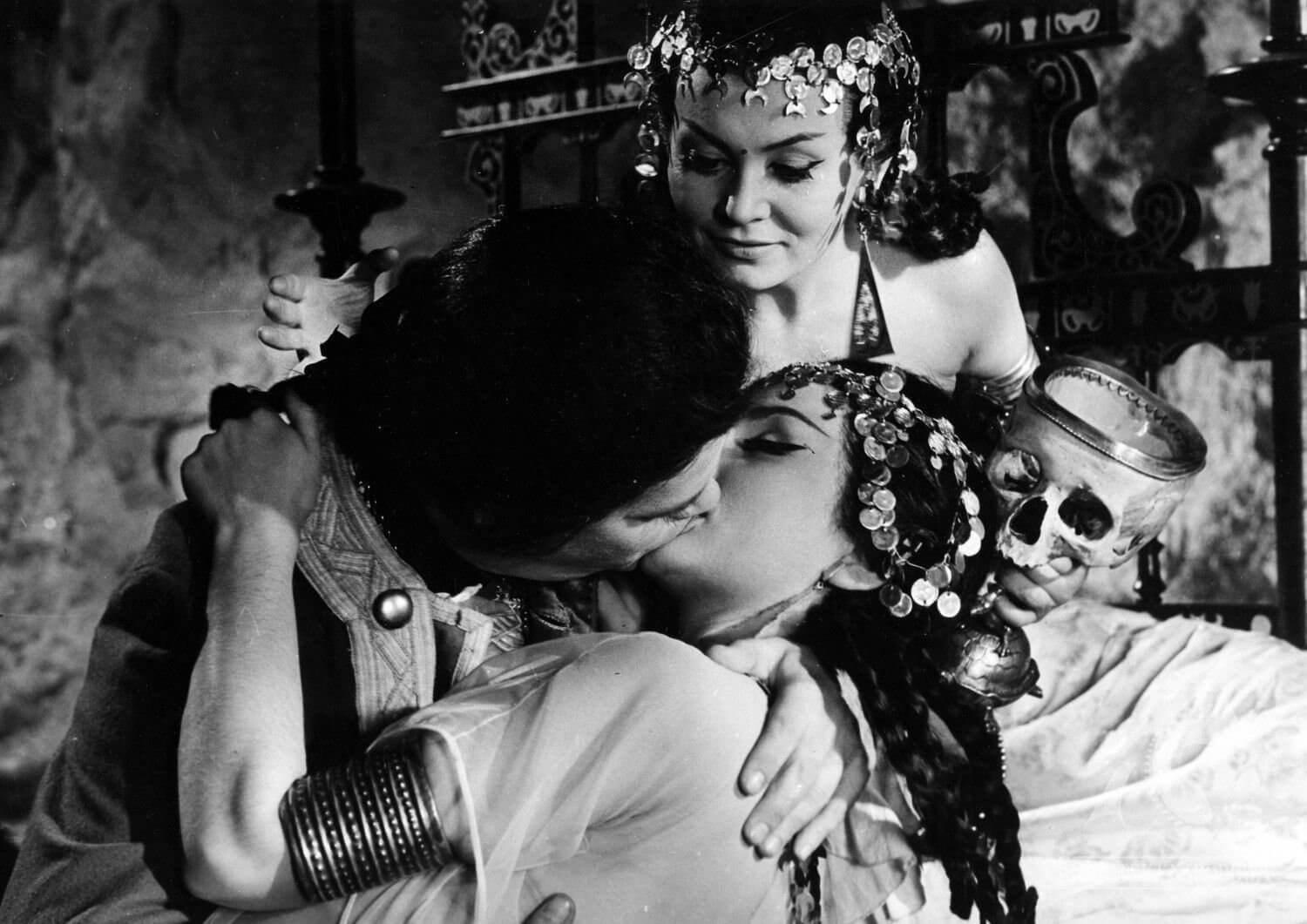
When Emina and Zibelda seduce the Spanish captain with sensual kisses and the prospect of a love triangle, the viewer notices the traps highlighted in the scenography by Jerzy Skarżyński and Tadeusz Myszorek. Why were the amorous ecstasies pushed into an underground cave full of still lifes straight out of the canvases of Dutch masters? How did the princesses come into possession of a chalice made from a human skull? Van Worden does not ask these questions, because why think about death when life seems so beautiful?
Schulz is far from Potocki’s adventurous temperament, so there is no place for Moorish princesses in The Hourglass Sanatorium. This does not mean, of course, that there is no room for specters taking female forms somewhere beyond time, in the strange establishment of Dr. Gotard. One of them takes on the features of Janina Sokołowska. It is she who welcomes young Jan Nowicki to the sanatorium. The nurse’s cap and apron clinging to her feminine shapes evoke a sense of security. However, this feeling is deceptive. We quickly realize that Dr. Gotard’s sanatorium resembles Tarkovsky’s Solaris more than a clinic caring for the patient’s welfare. Janina Sokołowska also bears a resemblance to Natalia Bondarchuk and her Hari. It’s not just about physical beauty but primarily about an unclear ontological status. The empty eyes, disappearing at unexpected moments, the absent grimace on her face – the young nurse is the gatekeeper of this strange space.
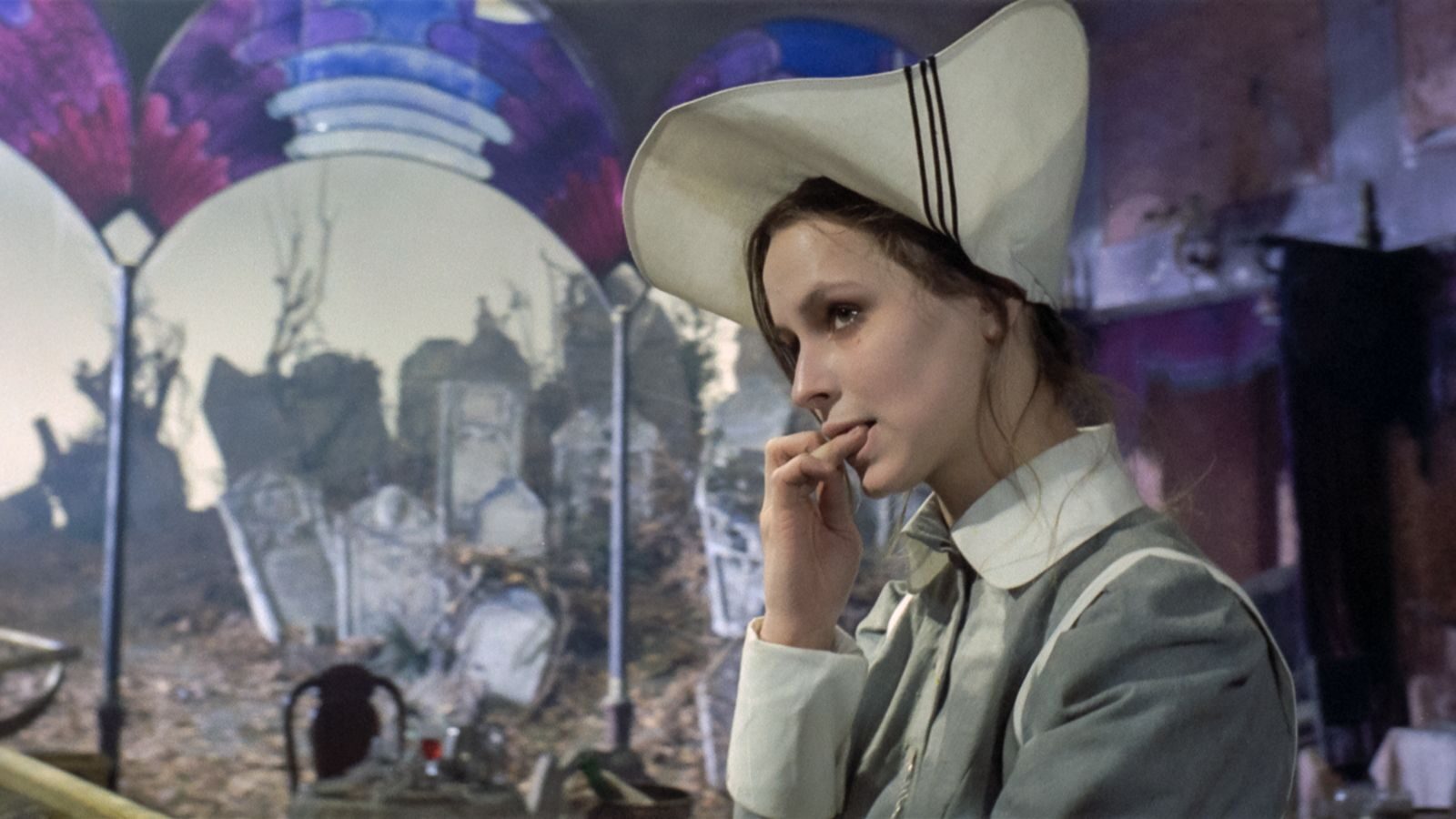
One of the key moments of the protagonist’s wandering in The Hourglass Sanatorium is the first encounter with Bianka, another twenty-something in Wojciech Has’s world. Bożena Adamek looks at Jan Nowicki with her big blue eyes and speaks without moving her lips. Again, it’s simultaneous presence and absence, being out of sync. The protagonist decides to follow the reflections of the white dress and enter the mysterious garden. This decision is fraught with consequences, as it leads to an encounter with mannequins. Bianka is present at all the crucial moments of Józef’s sanatorium journey. She sits with him on the bed when the blind conductor informs Józef that time can get lost and stray beyond the linear movement marked by the clock’s hands, she leads him into the garden space, and most importantly, she accompanies him in the moment of blasphemy against God. When Józef, using a magic incantation, wants to animate the mannequins, thus copying the act of creation, Bianka stands by and watches what she has led him to by inviting him to the garden. She is like the biblical Eve, with the crippled attempt to create a human becoming the forbidden fruit. Józef does not create people but golems. This failure leads to his downfall.
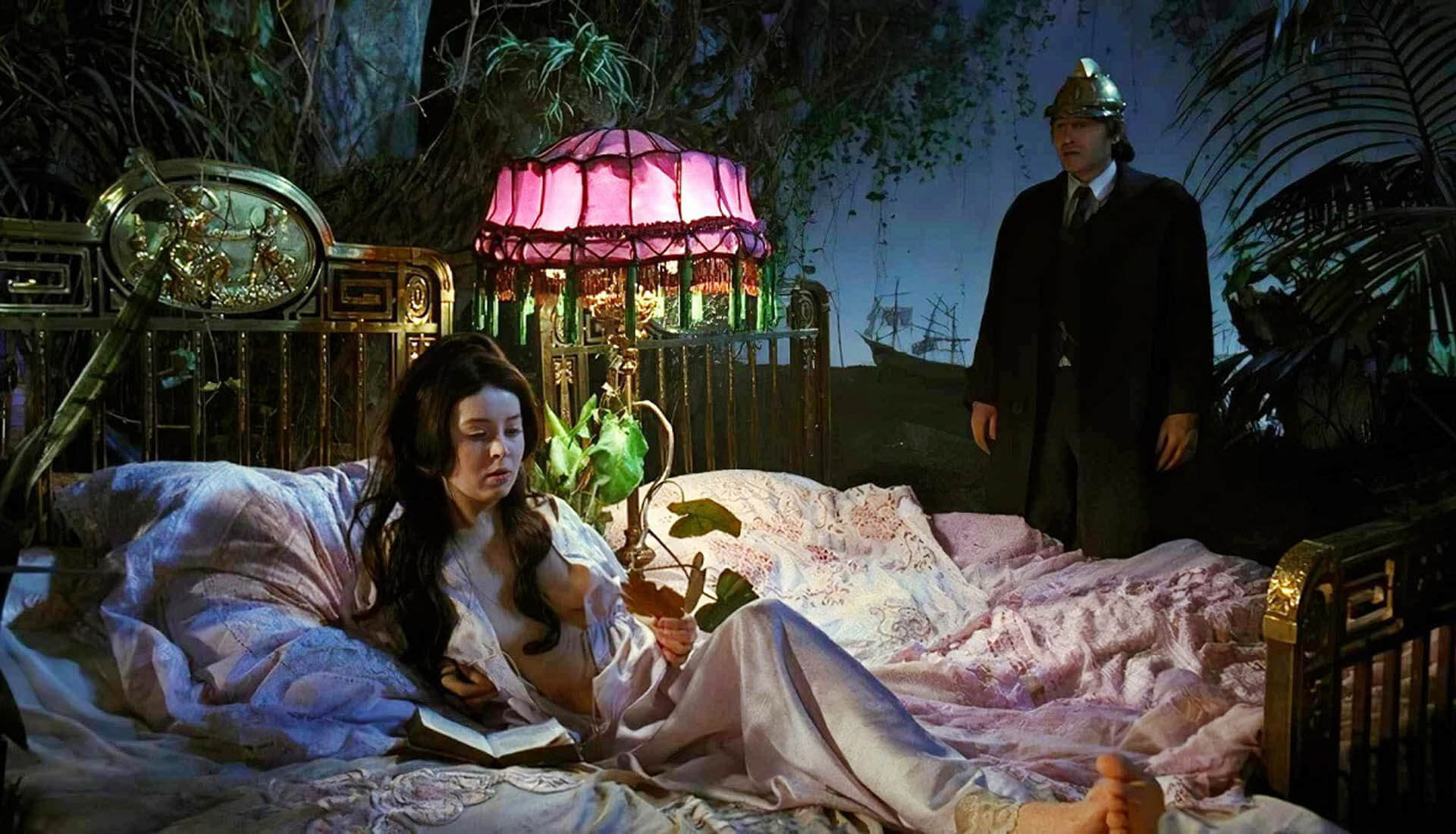
Miracles?
There is a black-and-white photo where Zbigniew Cybulski, with a mischievous smile, touches the tip of his index finger to Kalina Jędrusik’s breast. The woman does not retreat, far from being outraged or blushing. She looks at Cybulski, hidden behind dark glasses, from under her extended lashes and knows that in this game, she holds the cards. Her hand is on the inner part of the man’s thigh, Cybulski almost sliding off the bar stool. Checkmate on the set of How to Be Loved.
This photograph could grace the cover of any study of Has’s work. The turbulent history of Polish cinema knows no director who could celebrate female beauty better than Wojciech Has. Enough about angels and specters, vampires and Eurydices that lure into worlds alien and unfriendly to breathing humans. Has’s films are also about the beauty of the body, but without vulgar explicitness. The director’s sensitivity combines various orders. On one hand, there is the timid Schulz-like admiration, which makes one look at a woman as a work of art too sacred even to think about approaching and touching the material from which it was made. One can fantasize about her, even boldly, but that’s all. On the other hand, there is the masculinity of Hłasko. Hands accustomed to grease and the steering wheel of an old truck. Woman as physicality. However, it must be remembered that Hłasko was also aware of the ambivalence of the relationship between the two sexes. Just recall his First Step in the Clouds.
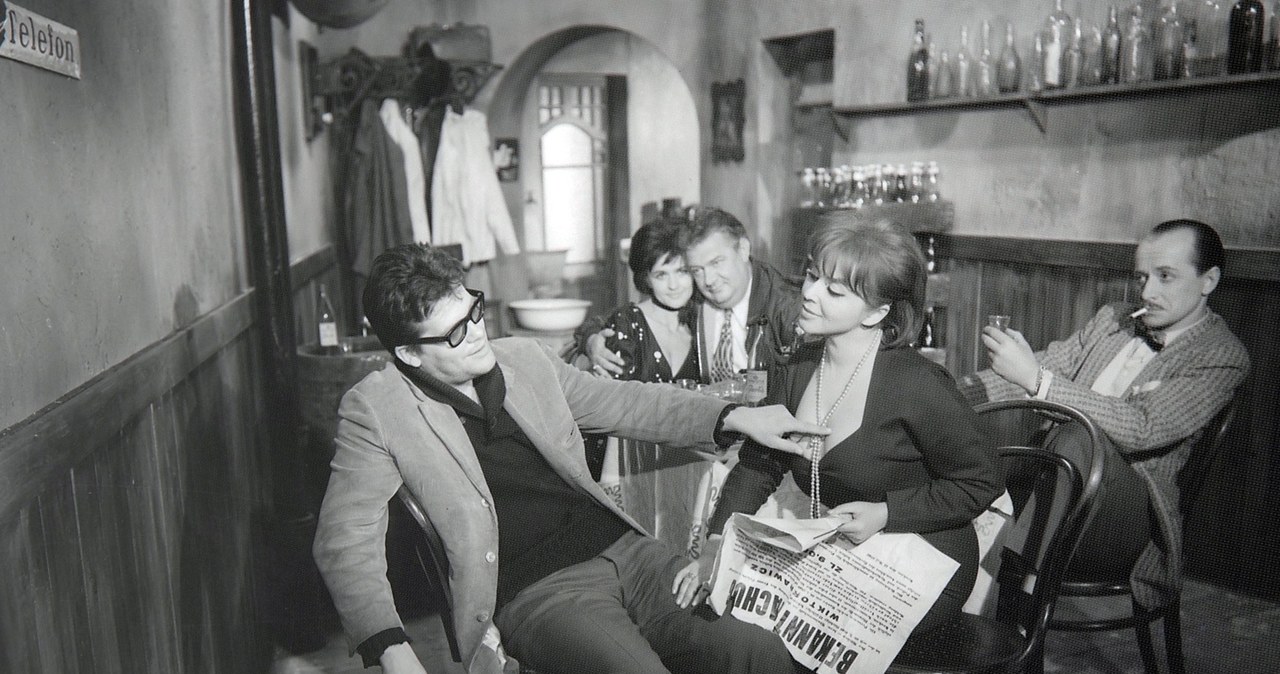
Has’s fetish is women’s breasts, which often play with the golden ratio of the frame. The seductively unbuttoned shirt of Maria Wachowiak in Farewells, the breast of Janina Sokołowska shyly peeking out from the unbuttoned nurse’s uniform in The Hourglass Sanatorium, or the nightgown revealing the breasts of a laughing Bianka are just some representations that tempt with their apparent concealment, appearing in the frame as if by chance. Then there is the whole array of cleavages – Beata Tyszkiewicz in The Saragossa Manuscript and The Doll, the Moorish princesses and Spanish women from Saragossa, Anna Dymna and Katarzyna Figura in Memoirs of a Sinner are the first examples that come to mind. Finally, breasts fully exposed, without hiding behind the facade of chance. In this aspect, The Hourglass Sanatorium leads the way, with naked women clad in bird feathers covering the most intimate parts of their bodies, and Halina Kowalska in the role of Adela. Adela is the essence of femininity understood as a gender; men are drawn to her like insects to the light of a bulb. Arkady Fiedler, a Polish naturalist and traveler, once wrote that the drive of insects towards brightness is a ghastly act. Their unstoppable desire leads them straight into the claws of danger. How true this is in the case of Adela, who, in one of the scenes of The Hourglass Sanatorium, mocks the decapitation of Holofernes by dipping a mannequin’s head into a pot of borscht. And even though it is a woman’s head, Adela takes it out and wants to give it to Józef, adding that he should scare the men gathered in the Jewish shop with it.
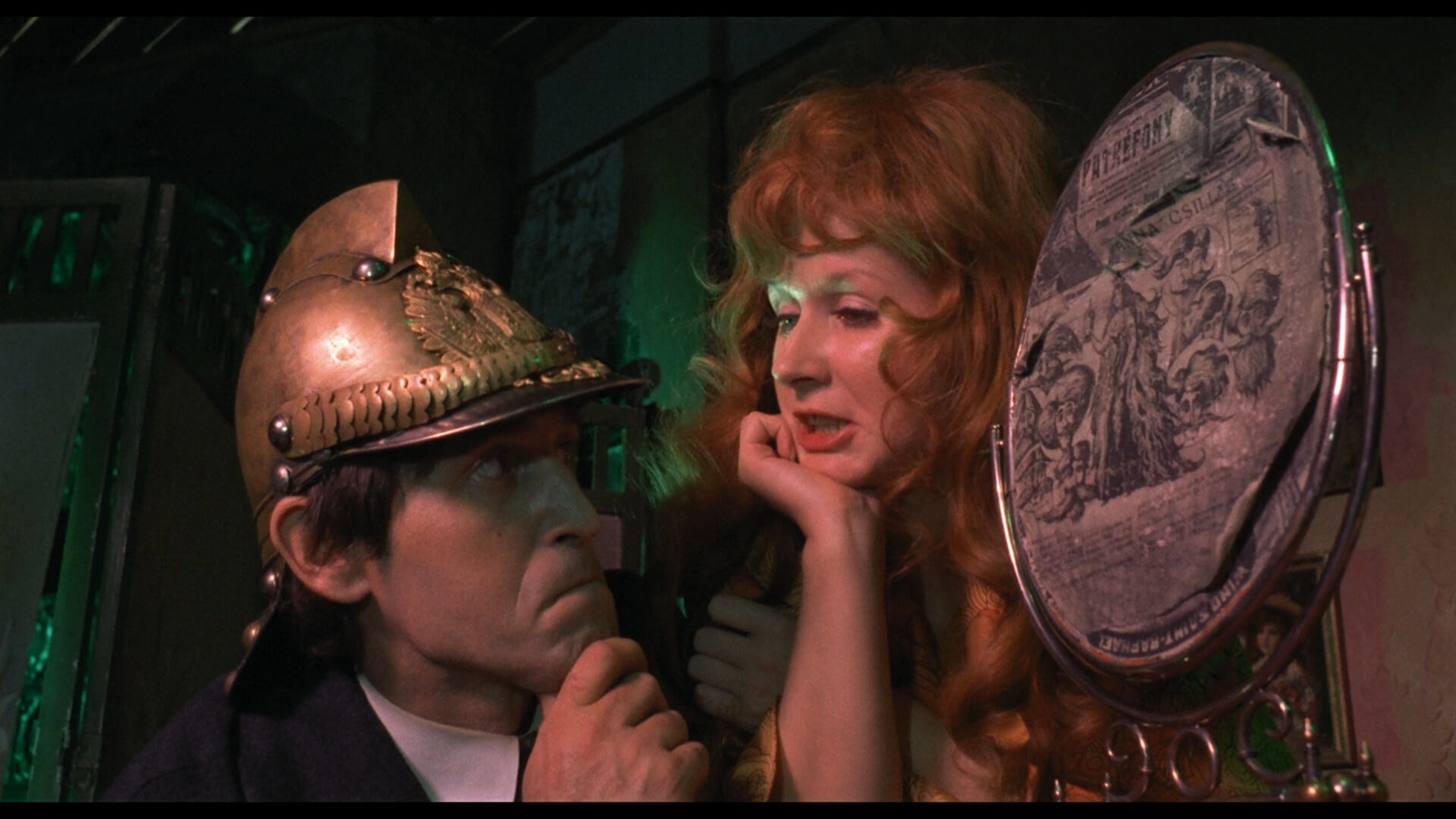
The Shadow in the Doorway
Has’s cinema is one great wander through Schulz’s sanatorium. Among all these cemeteries of memories, tombstones of lost loves, certainties, and experiences, only one thing remains unchanged. The ambivalent bond between man and woman is alive in every story told by the director, and since his cinema is narrated from a male perspective (even when the main characters are women), the element particularly fascinating, incomprehensible, and attractive like the light from Fiedler’s stories is invariably the woman for Has. From the moment when the silhouette of Krystyna flickered in the doorway of Kuba’s tenement house, to the last journey of Balthazar Kober, nothing has changed in this aspect. The man still looks at the door with slight fear but subconsciously wants to open it, and then let her in, look, touch, embrace, not let go, and despite the constant nervousness, take his next step in the clouds.

